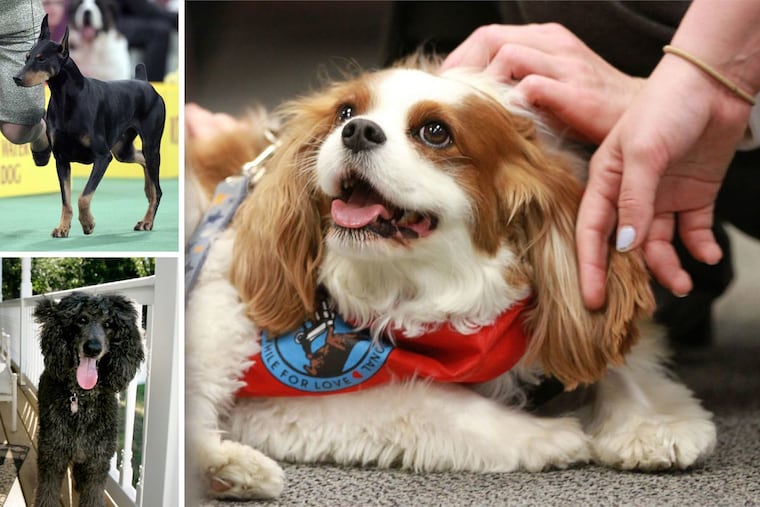Breeding has shaped dogs’ brains, MRI scans reveal
Hunters, guard dogs, and animals bred for companionship were found to have different brain "networks."

As hunters, fetchers, and vigilant protectors, dogs have honed a wide array of specialized skills through centuries of breeding.
In a new study, scientists say evidence of all this human intervention can be seen at a deeper level than simply how the animals use their snouts and paws:
It shows up on MRIs of their brains.
The authors analyzed brain scans of 62 dogs from 33 breeds, identifying six broad “networks” of interconnected brain regions related to such traits as smell, vision, and navigation — and finding that these networks were larger or smaller in various animals as a result of breeding.
It was no surprise to find evidence that humans had shaped dogs’ brains, but many of the details were unexpected, said lead author Erin E. Hecht, an assistant professor in Harvard University’s department of human evolutionary biology.
In hunting dogs, for example, the regions of the brain devoted to detecting sights and smells were roughly the same size no matter which sense a particular breed relied upon to detect its prey.
Instead, the scans revealed differences in the brain regions that handle making decisions about those sights and smells, Hecht said.
“It seems like those behaviors are more related to higher-order regions of the brain,” she said.
Hecht, whose website says that her miniature Australian shepherds, Lefty and Izzy, “are mostly good,” was joined in the research by scientists from Emory, Stony Brook, and Michigan State Universities and the University of Georgia. Their study was published in the Journal of Neuroscience.
The authors analyzed MRIs from animals that had come in for a neurological exam but were found by veterinarians to have no brain abnormalities. All were sedated for the screening procedure.
The authors were unable to draw conclusions about individual breeds, as many were represented by just one or two animals.
Nevertheless, the differences in the brain scans were pronounced enough that they could not have been caused by chance alone, Hecht said. The range of sizes for different brain regions also could not be explained simply by the size and skull shape of the animal.
Wilfried Mai, a professor of radiology at the University of Pennsylvania School of Veterinary Medicine, who was not involved with the study, agreed with those conclusions.
“The paper demonstrates very nicely differences in brain morphology with either reduction or hypertrophy [larger size] of certain brain areas that are known to be associated with specific behaviors,” he said in an email.
In addition to the brain networks for vision and smell, the authors identified others that were correlated with four sets of traits: spatial navigation; social interaction; stress and anxiety; and drive and reward.
As a group, the dogs bred for companionship (such as the Maltese and Bichon frise) tended to score higher on the social interaction network, for example. Those bred for scent hunting, a group that included beagles and basset hounds, tended to score higher on the “olfaction” network.
A few of the names for the six networks represented an educated guess, as little is known about the function of higher-order structures in the dog brain.
What’s clear is that within the cortex — the complex outer layer marked by telltale “folds” — the regions responsible for various behaviors are likely found in different locations for humans and dogs.
That’s because the last common ancestors of humans and dogs, which lived about 100 million years ago, probably had a “smooth” brain, Hecht said. Both branches of the tree of life would go on to develop those folds separately.
Another limitation of the study is that the animals were pets, and likely not engaged in much of whatever behavior their original breeders intended. Hecht said it was the equivalent of scanning the areas associated with language development in the brain of a human who was never exposed to language.
Still, the differences in the dog brains were clearly connected to breeding by humans, the authors found.
As for the age-old question of which breeds are smarter, the authors did not touch that one. No mixed-breeds, either, though Hecht said they would be good subjects for additional study.
Asked why an expert in human evolutionary biology would study dogs, Hecht said research on each can be useful in learning more about the other.
The two species are inseparable in real life, after all. Why not in the lab?